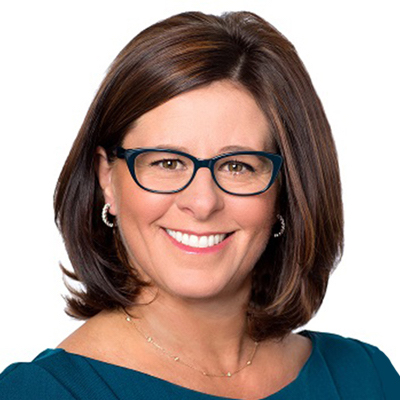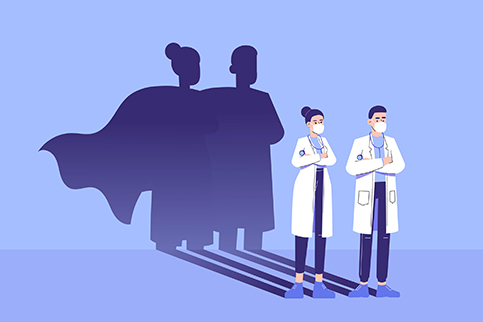The Pre-Pandemic Burnout Epidemic
For years, physicians, advanced providers, and nurses have been at high risk for burnout and depression. Some representative stats:
- In a 2020 survey of over 15,000 physicians in 29 specialties, 42% of respondents reported experiencing burnout symptoms.
- Burnout in physician assistants is less researched. However, existing studies suggest a burnout rate of 34-64%.
- A 2011 study found that 37% of hospital nurses engaged in direct patient care showed at least one symptom of burnout (emotional exhaustion). Results of a much smaller 2017 survey suggest that rates of nurse burnout may be rising.
Now the pandemic is layering existential threats on top of that pain. Some of us have been emotionally exhausted by caring for hundreds of COVID-19 patients. In many parts of the country, we are physically exhausted from working long shifts swathed in uncomfortable PPE. We feel a sense of dread as new cases pour in and our hospitals approach maximum capacity. At the same time, we may be mourning the losses of friends, neighbors, and family members — all while bracing for another surge in cases.
There are hundreds of thousands of second victims in this pandemic. But unlike “traditional” disasters like hurricanes, earthquakes, or other mass casualty events, the pandemic is stretching out for months (and may continue for years). Frontline providers grind on through the anguish, doing their best to rally their energy and stay focused on their jobs.
In these tough times, we need to offer our clinical teams tools for wellness and resilience, as well as license to make change. Together, these three elements will bring our healthcare workforce through the pandemic and create a more robust and sustainable healthcare system.
Three Elements of Clinical Resilience
Stanford has defined a three-part model of professional fulfillment in medicine:
- Culture of Wellness
- Personal Resilience
- Efficiency of Practice
This model resonates with me in many ways, and its elements align with the three building blocks I believe clinical organizations need to develop to support frontline teams through the pandemic.
1. Wellness
Over the past decade, many health systems and employers have implemented wellness programs. The goal is to provide the resources providers need to take care of their physical, emotional, and spiritual health.
When we think of employer-based wellness programs, we tend to think of perks like Zen tents, free yoga and exercise classes, and free counseling. But as Stanford recognized, true wellness is embedded in the culture of organizations. How on earth can we expect our bedside nurses to provide safe and effective patient care when they are too busy to eat, hydrate, or use the bathroom? And what about a PA or resident who is frequently belittled by an attending physician?
As healthcare leaders, we need to think of wellness as a systemic issue rather than a series of perks. Start by engaging with your healthcare providers to uncover the barriers they face to wellness. Often, they will also have valuable suggestions on how these problems might be fixed.
“Coupled with dedicated wellness and personal resilience resources, the license to act is the key element for clinician resilience, and the resiliency of our healthcare delivery system as a whole.”
Denise Brown, MD
Chief Growth Officer
2. Personal Resilience
Your next priority is to help providers build clinical resilience, a concept that researchers have linked to decreased burnout and improved job satisfaction. Resilience is defined as the ability to recover quickly from “stress, adversity, trauma, and tragedy.” Those of us who feel called to care for acutely ill patients tend to be resilient by nature. But as the burnout epidemic shows, we aren’t superhuman. Over time, the physical and emotional demands of our work add up and take a toll.
Personal resilience programs help build evidence-based skills that combat compassion fatigue and burnout, improve self-regulation, and help to enhance relationships and feelings of connection. Several leading clinical organizations have established personal resilience programs for their providers. But in most cases, the burden is still on individuals to identify the need and find their own support tools. As organizational leaders, we can help by formalizing resilience training and weaving it into existing professional development pathways.
3. License to Act
The third element of the Stanford model is “efficiency of practice.” Do we feel that we are doing meaningful work at our hospitals? Or are we caught in administrative minutiae that distance us from impacting patients’ lives?
In the context of clinical organizations, I take this a step further. It’s not just about feeling effective in your work. More important is the ability to drive organizational change that improves care in meaningful, sustainable ways. This is the definition of post-traumatic growth, which my colleagues Gregg Miller, MD, and Herb Harman, MD, have written about in STAT.
For physicians and advanced providers, having a voice in the way care is delivered is critical to our personal well-being. Examples include creating a better system to track culture results or changing the standard of care for behavioral health patients in the emergency department. During the pandemic era, this license to act can manifest as launching a hospital at home, shifting to virtual care delivery, or creating a surge staffing plan that incorporates relief clinicians.
Change need not be sweeping to be meaningful. At the same time, the pandemic represents a change opportunity that may not come around again in our lifetimes. Our innovations in the face of this crisis may ultimately enable us to deliver better care to more people — all while reducing the burden on clinicians. The fact that we are now caring for patients exactly where they are (rather than waiting for them to walk through the hospital doors) is a cause for celebration for nearly all my clinical colleagues and me.
Now that we’re able to extend care beyond the hospital walls into the homes and workplaces of patients, where do we go next? And how can we translate these advances into better care for those who are woefully underserved? We need to find ways to bring virtual care to those who are homeless, don’t own computers or smartphones, or lack the resources to afford a visit. I strongly believe that's where frontline teams should be focusing their innovation. It’s the right thing to do and we are the right people to do it.
There is No Post-COVID World
Politicians, the media, and some industry leaders keep talking about a “post-COVID world”. However, those of us on healthcare’s front lines realize that there’s no such thing. It's therefore vital that our healthcare community unites to support the generation of frontline workers whose careers will be shaped by the pandemic. Without a commitment to all three elements of clinical resilience, our workforce will be decimated by a second wave – of retirements, or worse.
At the same time, we also must continue to adapt and serve our communities against the backdrop of a “new normal”. The best way forward is to harness the wisdom and experiences of our frontline teams to improve our systems of care and take advantage of the seismic shifts happening in healthcare delivery. I believe our teams are up to the challenge, which makes me optimistic and incredibly excited about our future.
Engaging frontline teams in re-imagining care is the utmost we can do for both clinicians and patients. Coupled with dedicated wellness and personal resilience resources, the license to act is the key element for clinician resilience, and the resiliency of our healthcare delivery system as a whole.























